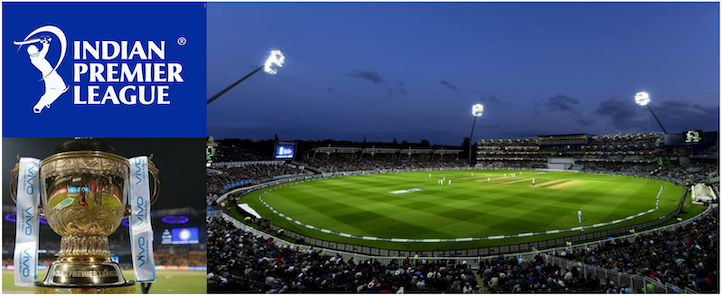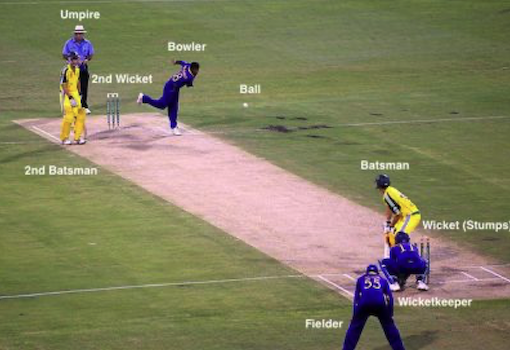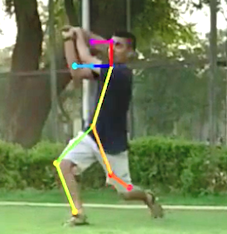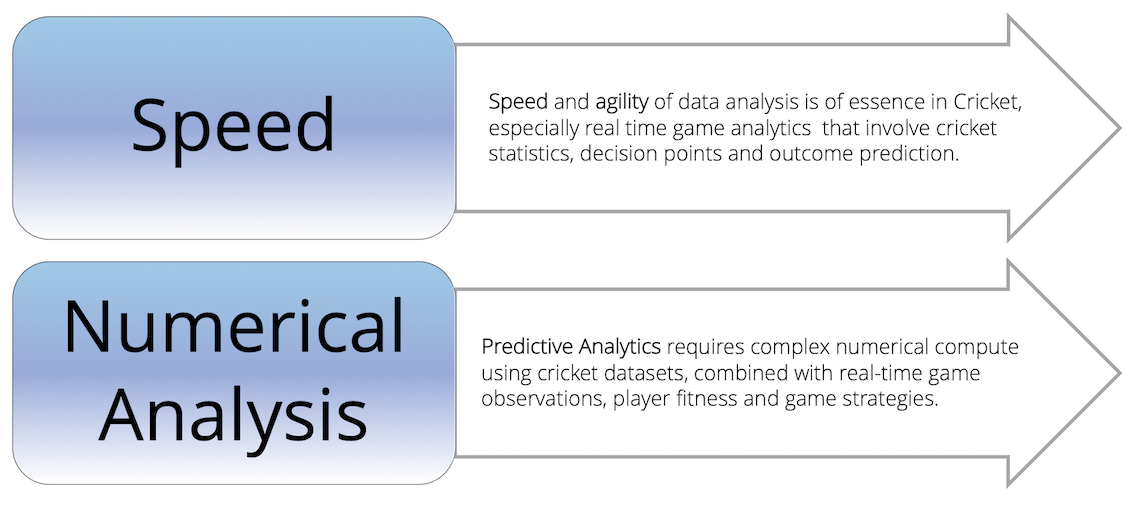Case Study: Cricket Analytics, the game changer!

(Image credits: IPLT20 (cup and logo) & Akash Yadav (stadium))
You don't play for the crowd, you play for the country.
—M S Dhoni, International Cricket Player, ex-captain, Indian Team, plays for Chennai Super Kings in IPL
About Cricket#
It would be an understatement to state that Indians love cricket. The game is played in just about every nook and cranny of India, rural or urban, popular with the young and the old alike, connecting billions in India unlike any other sport. Cricket enjoys lots of media attention. There is a significant amount of money and fame at stake. Over the last several years, technology has literally been a game changer. Audiences are spoilt for choice with streaming media, tournaments, affordable access to mobile based live cricket watching, and more.
The Indian Premier League (IPL) is a professional Twenty20 cricket league, founded in 2008. It is one of the most attended cricketing events in the world, valued at $6.7 billion in 2019.
Cricket is a game of numbers - the runs scored by a batsman, the wickets taken by a bowler, the matches won by a cricket team, the number of times a batsman responds in a certain way to a kind of bowling attack, etc. The capability to dig into cricketing numbers for both improving performance and studying the business opportunities, overall market, and economics of cricket via powerful analytics tools, powered by numerical computing software such as NumPy, is a big deal. Cricket analytics provides interesting insights into the game and predictive intelligence regarding game outcomes.
Today, there are rich and almost infinite troves of cricket game records and statistics available, e.g., ESPN cricinfo and cricsheet. These and several such cricket databases have been used for cricket analysis using the latest machine learning and predictive modelling algorithms. Media and entertainment platforms along with professional sports bodies associated with the game use technology and analytics for determining key metrics for improving match winning chances:
- batting performance moving average,
- score forecasting,
- gaining insights into fitness and performance of a player against different opposition,
- player contribution to wins and losses for making strategic decisions on team composition

(Image credit: Debarghya Das)
Key Data Analytics Objectives#
- Sports data analytics are used not only in cricket but many other sports for improving the overall team performance and maximizing winning chances.
- Real-time data analytics can help in gaining insights even during the game for changing tactics by the team and by associated businesses for economic benefits and growth.
- Besides historical analysis, predictive models are harnessed to determine the possible match outcomes that require significant number crunching and data science know-how, visualization tools and capability to include newer observations in the analysis.

(Image credit: connect.vin)
The Challenges#
Data Cleaning and preprocessing
IPL has expanded cricket beyond the classic test match format to a much larger scale. The number of matches played every season across various formats has increased and so has the data, the algorithms, newer sports data analysis technologies and simulation models. Cricket data analysis requires field mapping, player tracking, ball tracking, player shot analysis, and several other aspects involved in how the ball is delivered, its angle, spin, velocity, and trajectory. All these factors together have increased the complexity of data cleaning and preprocessing.
Dynamic Modeling
In cricket, just like any other sport, there can be a large number of variables related to tracking various numbers of players on the field, their attributes, the ball, and several possibilities of potential actions. The complexity of data analytics and modeling is directly proportional to the kind of predictive questions that are put forth during analysis and are highly dependent on data representation and the model. Things get even more challenging in terms of computation, data comparisons when dynamic cricket play predictions are sought such as what would have happened if the batsman had hit the ball at a different angle or velocity.
Predictive Analytics Complexity
Much of the decision making in cricket is based on questions such as “how often does a batsman play a certain kind of shot if the ball delivery is of a particular type”, or “how does a bowler change his line and length if the batsman responds to his delivery in a certain way”. This kind of predictive analytics query requires highly granular dataset availability and the capability to synthesize data and create generative models that are highly accurate.
NumPy’s Role in Cricket Analytics#
Sports Analytics is a thriving field. Many researchers and companies use NumPy and other PyData packages like Scikit-learn, SciPy, Matplotlib, and Jupyter, besides using the latest machine learning and AI techniques. NumPy has been used for various kinds of cricket related sporting analytics such as:
Statistical Analysis: NumPy’s numerical capabilities help estimate the statistical significance of observational data or match events in the context of various player and game tactics, estimating the game outcome by comparison with a generative or static model. Causal analysis and big data approaches are used for tactical analysis.
Data Visualization: Data graphing and visualization provide useful insights into relationship between various datasets.
Summary#
Sports Analytics is a game changer when it comes to how professional games are played, especially how strategic decision making happens, which until recently was primarily done based on “gut feeling" or adherence to past traditions. NumPy forms a solid foundation for a large set of Python packages which provide higher level functions related to data analytics, machine learning, and AI algorithms. These packages are widely deployed to gain real-time insights that help in decision making for game-changing outcomes, both on field as well as to draw inferences and drive business around the game of cricket. Finding out the hidden parameters, patterns, and attributes that lead to the outcome of a cricket match helps the stakeholders to take notice of game insights that are otherwise hidden in numbers and statistics.
